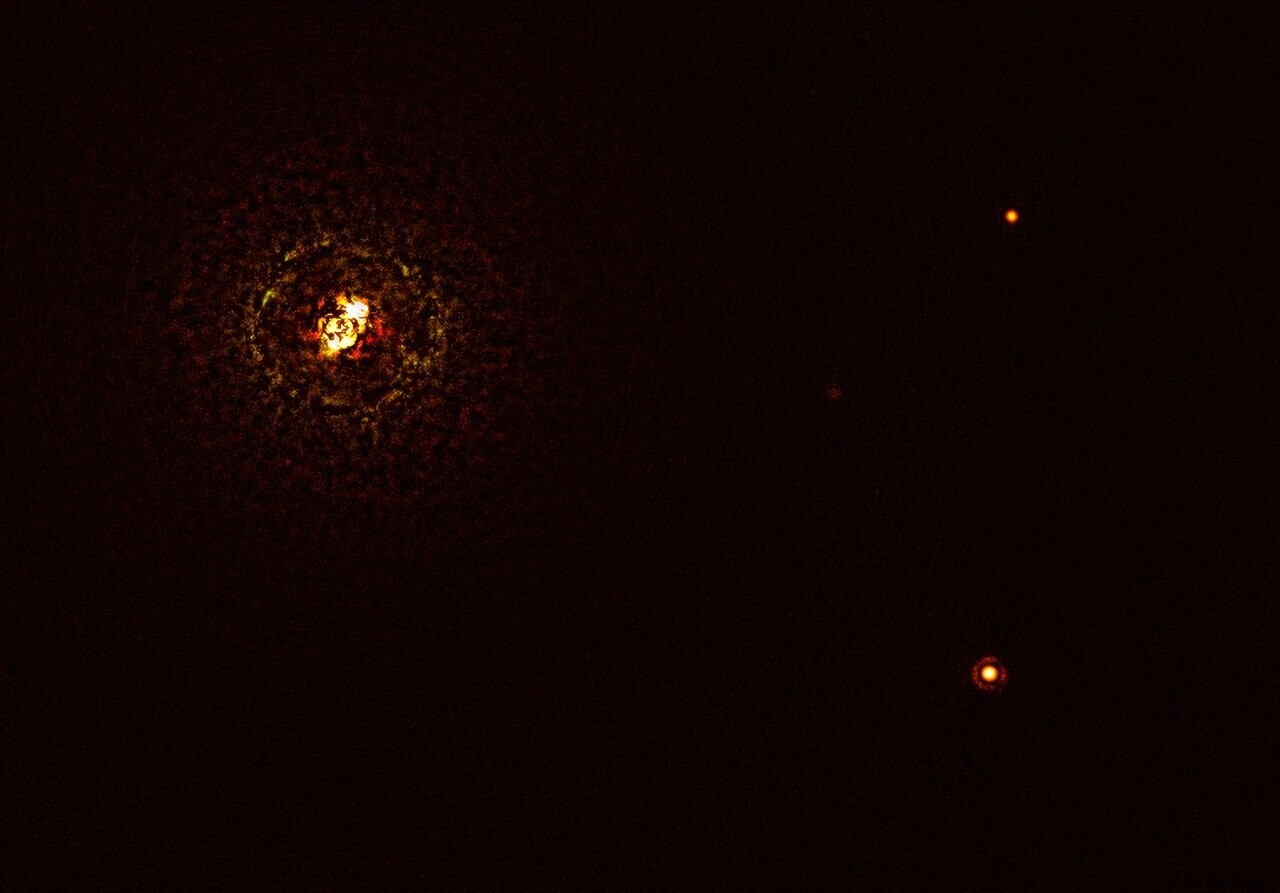Astronomers using ESO's Very Large Telescope were able to directly image the presence of a giant planet around a massive star system and ultra-hot visible to the naked eye. Until now, we thought that worlds could not evolve around such objects.
Located approximately 325 light-years from Earth in the constellation Centaurus, the twin star system b Centauri (or HIP 71865) totals about six solar masses. Like most massive stars, these two objects are also very hot. Indeed, its main star is a B-type star three times hotter than the Sun. Due to its intense temperature, it thus emits large amounts of ultraviolet radiation and X-rays into its environment.
The large mass and heat of this type of star therefore has a strong impact on the surrounding gas. These conditions are such that until now, we thought the formation and evolution of planets impossible in these systems. Yet this is the case, evidenced by this new discovery published in Nature.
Based on ESO's Very Large Telescope, astronomers recently isolated the presence of a planet at least ten times more massive than Jupiter . This world, one of the largest ever discovered, evolves at nearly one hundred times the distance separating Jupiter from the Sun .
So far, no planet has been spotted around a star more than three times as massive as ours. This new discovery thus proves that planets can indeed form in stellar systems where the conditions are so severe.
“This planet is an alien world in a completely different environment from what we experience here on Earth and in our Solar System “, underlines Gayathri Viswanath, of the University of Stockholm and co-author of this work. "It's a harsh environment, dominated by extreme radiation, where everything is on a gigantic scale:the stars are bigger, the planet is bigger, and the distances are greater . »
Thanks to the power of the telescope, the researchers were even able to obtain an image of this planet, visible below.

This giant planet could be imaged thanks to the Spectro-Polarimetric High Contrast Exoplanet REsearch (or SPHERE) instrument mounted on ESO's VLT, Chile. In reality, it had already been imaged more than twenty years ago by another telescope . Only, at the time, it had not been recognized as a planet.
In the future, astronomers would like to continue these observations using ESO's European Giant Telescope which is due to begin observations in 2025. VLT upgrades will also be able to perhaps reveal more about the formation and characteristics of this world like no other.